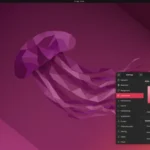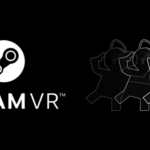The idea of running a PC solely on Steam and its games can be intriguing for many dedicated gamers. A computer dedicated only to gaming might seem like the ultimate setup to avoid distractions. Yes, it is indeed possible to configure a PC to run only Steam and nothing else, but it’s not very practical. It make much more sense for a PC to have another OS installed (like Windows or Linux) and then install Steam on top of that.
Using the Windows operating system, gamers can set up their PCs to boot directly into Steam Big Picture mode, essentially transforming the computer into a dedicated gaming platform. This approach can simplify the user experience, especially for those focused purely on accessing their game library. Additionally, this can be particularly appealing for households where multiple users share the same system, making it easier to manage and restrict non-gaming activities.
There are ways to streamline the environment further by removing non-essential programs and optimizing the system’s resources for gaming. This setup can enhance performance and reduce unnecessary overhead, providing a more immersive gaming experience.
Running Steam Exclusively on a PC: Fact or Fiction?
Understanding the Limitations of SteamOS
While Steam does offer its own operating system called SteamOS, designed primarily for gaming, it’s not the most practical solution for a PC that exclusively runs Steam. SteamOS has limited compatibility with non-Steam applications and lacks the versatility of traditional operating systems like Windows or macOS.
The Challenges of a Steam-Only PC
Even if you were to strip down a Windows or macOS installation to only include Steam, you would still face numerous challenges:
- Updates: Operating systems require regular updates for security and functionality, and these updates often include components that are not directly related to Steam.
- Drivers: Hardware components like graphics cards, sound cards, and network adapters need drivers to function properly, and these drivers are typically not included in Steam.
- Background Processes: Operating systems run various background processes that are essential for system stability and performance, and these processes may conflict with Steam if they are removed.
Workarounds and Alternatives
While a true Steam-only PC is not feasible, there are a few workarounds you can consider:
- Big Picture Mode: Steam’s Big Picture Mode provides a console-like interface that can be used to launch and play games without accessing the desktop environment.
- Steam Link: This device allows you to stream games from your gaming PC to another device, such as a TV or a mobile phone, essentially turning any screen into a Steam machine.
- Gaming PCs with SteamOS: Some manufacturers offer pre-built gaming PCs that come with SteamOS pre-installed. While these PCs are not limited to Steam, they offer a streamlined experience for gamers who primarily use Steam.
Table: Pros and Cons of a Steam-Only PC
| Pros | Cons |
|---|---|
| Focused gaming experience. | Limited functionality for non-gaming tasks. |
| Potential for improved performance. | Difficult to set up and maintain. |
| Simplified interface. | Requires technical knowledge to implement. |
| Could be cheaper than a full OS. | May not be compatible with all Steam games or features. |
In conclusion, while the idea of a PC that only runs Steam might be appealing to some gamers, it’s not a practical or feasible solution due to the limitations of SteamOS and the requirements of modern operating systems. However, there are alternatives and workarounds that can provide a similar experience without sacrificing functionality.
Key Takeaways
- A PC can be configured to run only Steam.
- Booting directly into Steam Big Picture mode creates a console-like experience.
- This setup enhances performance and simplifies the user interface.
Understanding the Steam Ecosystem
Steam is a powerful digital distribution service offering various features for PC gaming. It allows users to install games, manage resources, and optimize their gaming experience efficiently.
Core Components and Installation
Steam is a digital platform created by Valve Corporation. To start, users need to download the Steam.exe installer from the official website. After running the installer, Windows users follow the prompted steps to complete the installation.
Upon installation, Steam serves as a hub for all apps and games purchased or added to the library. Users can browse, buy, and install games directly from the platform. The configuration settings provide options to customize the game installation paths and manage system resources.
Run Management and Resource Allocation
Once installed, Steam’s run management features help users manage system resources effectively. The platform ensures that only a single instance of Steam.exe runs at any given time to prevent conflicts or high resource usage.
Within the configuration options, users can set limitations on how much system memory or CPU resources Steam and its games can use. This ensures that the computer maintains optimal performance. Additionally, the platform provides updates and patches automatically, ensuring games run smoothly without requiring user intervention.
Frequently Asked Questions
This section answers common questions about configuring a PC to run only Steam, including technical requirements and compatibility.
What are the minimum PC requirements for running Steam effectively?
To run Steam effectively, the PC should have at least a dual-core processor, 2GB of RAM, and 1GB of free disk space. Additionally, it requires a stable internet connection.
Can a computer be configured to operate solely with Steam?
Yes, a computer can be configured to run only Steam. Using SteamOS, a Linux-based system, makes this configuration easier. SteamOS provides an environment focused entirely on Steam and gaming.
How does SteamOS 3.0 enhance the gaming experience on PC?
SteamOS 3.0 offers better driver support and optimizations for gaming. It provides a streamlined interface that focuses on the Steam library, making it easier to access and play games.
What are the compatibility considerations for running Steam on Ubuntu?
Running Steam on Ubuntu is possible but requires some additional setup. Users may need to install extra libraries and drivers to ensure that games run smoothly.
Is there an operating system optimized for a Steam-only environment?
SteamOS is designed specifically for a Steam-only environment. It is optimized for gaming and reduces background processes to improve performance.
In what ways does SteamOS differ from other open-source gaming platforms?
SteamOS focuses solely on the Steam ecosystem. Unlike other open-source gaming platforms, it integrates deeply with Steam, providing seamless access to Steam games and services.





